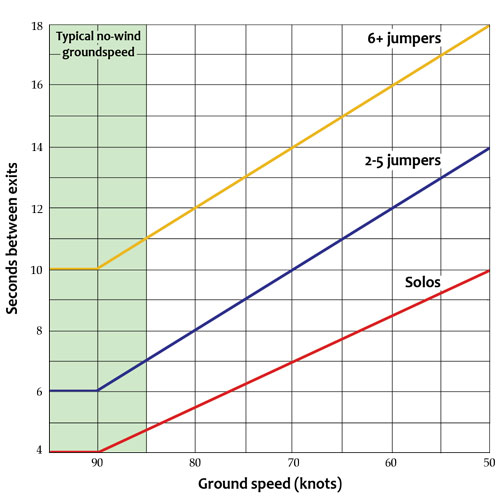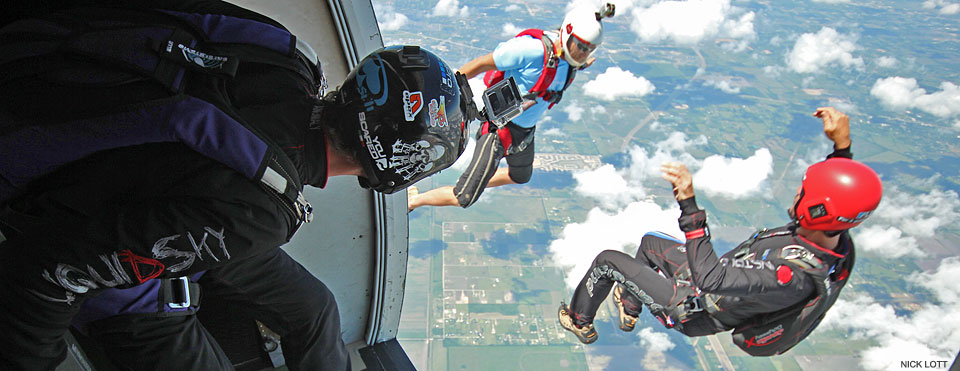As skydivers, we tend to like to do things together. We like to skydive with our friends, give each other grief about any minor mistakes during the dive, celebrate our successes, and enjoy brews together after sunset. Some people prefer solo skydives on occasion so they can work on skills or just enjoy the sky without distractions.
However, there are such things as too much and too little togetherness in skydiving. And only a few seconds might separate the two extremes when we are talking about the proper amount of time/space to leave between multiple skydivers and groups exiting the same aircraft on the same jump run. Our goal when selecting the right happy medium number of seconds to leave between groups is to arrive at a delay that does two things:
- Provides enough separation between adjacent groups so no groups will fall into the others’ airspace columns and risk collisions, and
- Keeps the entire load in an airspace box from which any reasonable skydiver should be able to land on the airport.
The risk of leaving too little time is collisions between groups, whether these are freefall or deployment collisions. But leaving too much time can spread out the jump run so much that the last skydivers out may not be able to make it back to the landing area.
So how do we decide how much time to leave? Luckily, skydivers before us have developed guidelines to tell us how much time is safe between groups based on experience. Keep in mind, however, that two major factors play into the answer.
- Group size. The larger the group, the higher they will break off and the more overall horizontal space the group will occupy when breaking off and deploying. Thus, you must leave more time when following out a bigger group compared to following out a solo skydiver.
- Ground speed of jump run. The space we want between groups for each group to have a clear column of air in which to deploy their parachutes is horizontal space, not vertical. (Vertical isn’t good enough because what if someone in the lower group has a premature deployment? Or what if someone in the upper group cuts away?) If the plane is flying slower into a headwind, it’s covering less ground per second, so we need to leave more time between groups to get the amount of horizontal distance we want.
Below is a graph showing how much time you should leave between groups of varying sizes. Remember: Exit separation is time between EXITS, not between the previous group’s exit and the start of your climbout. This graph is posted on our Safety Stand in the hangar so you can check it anytime you have a question about how much time to leave between groups.


